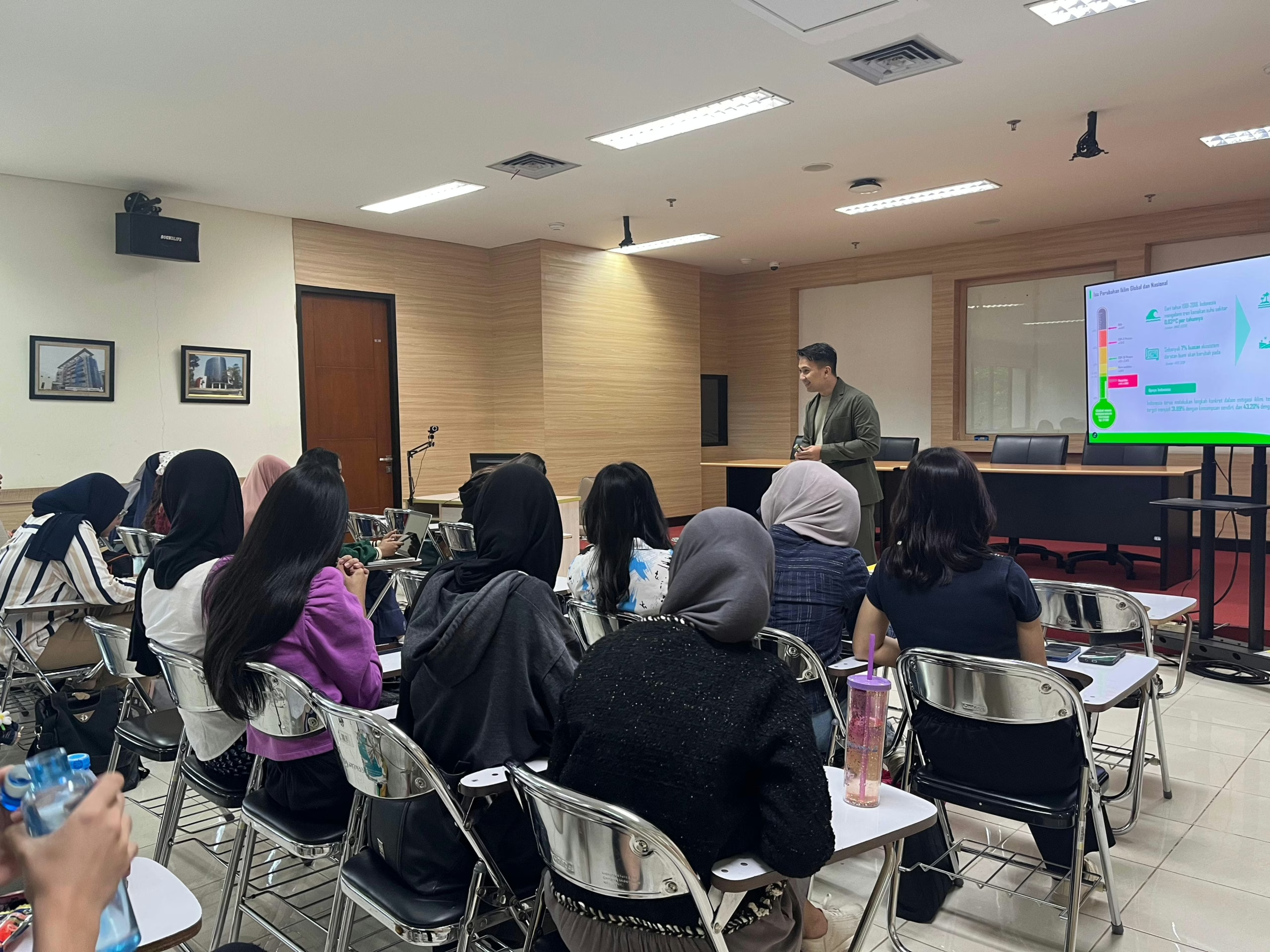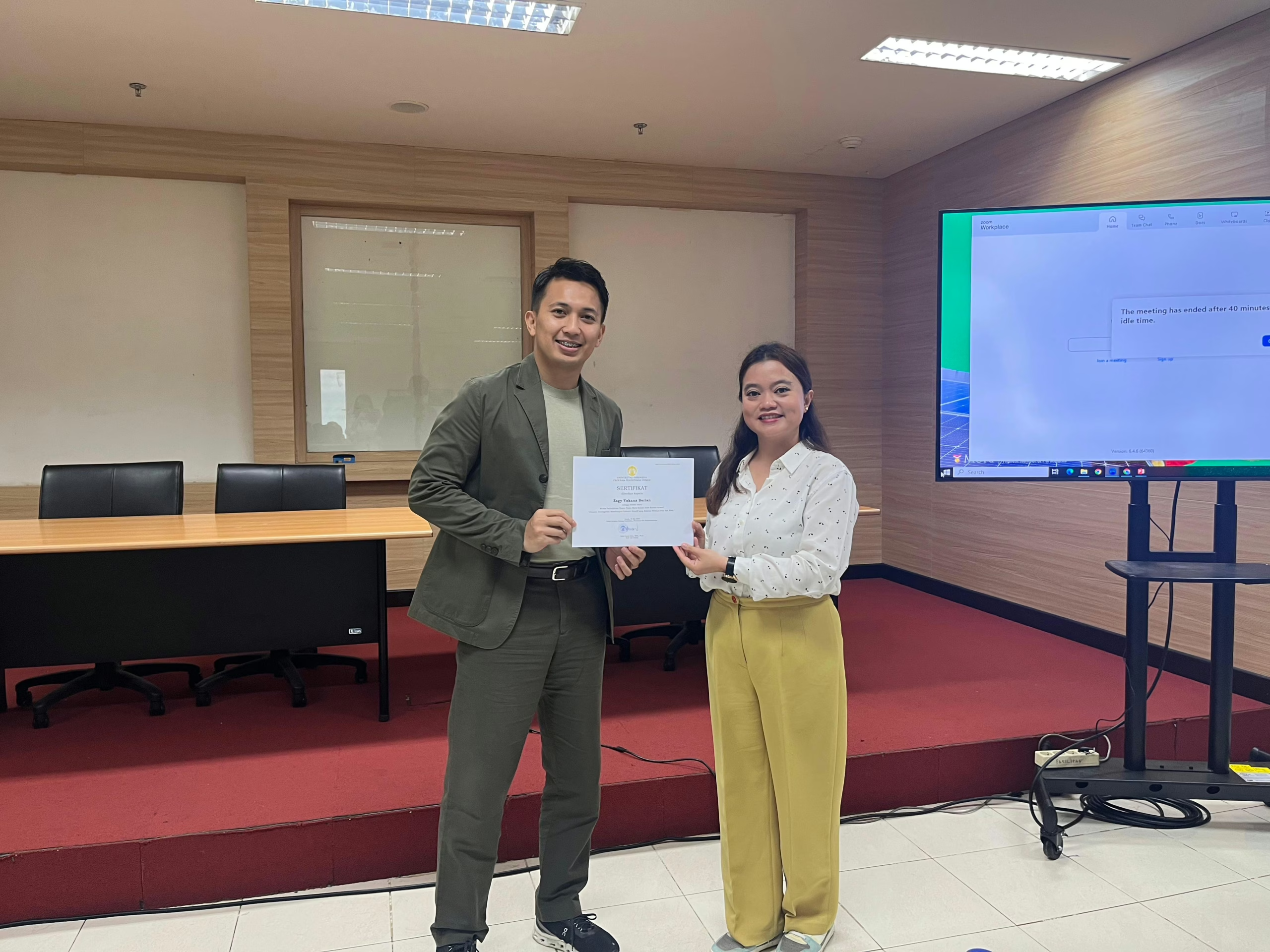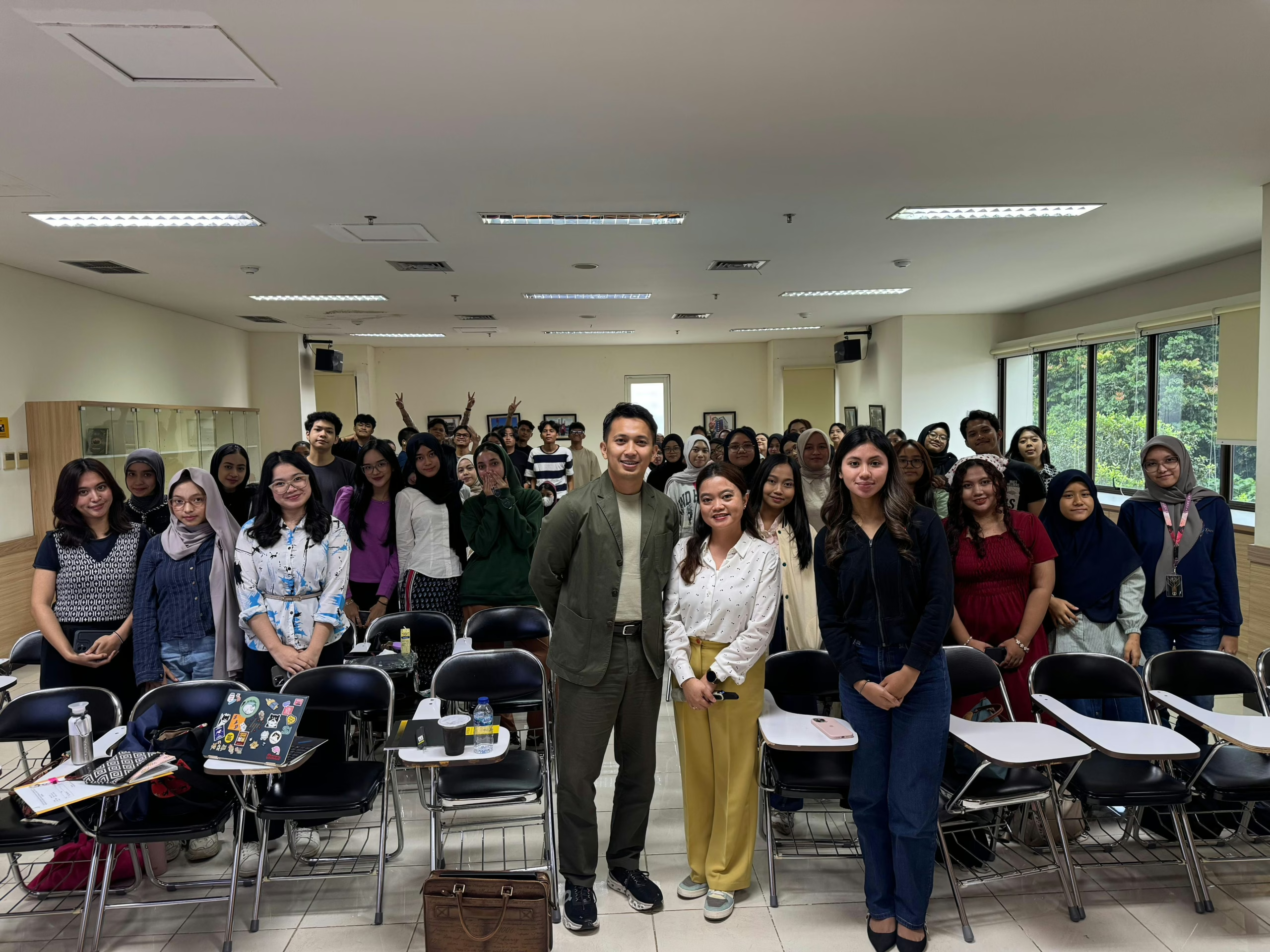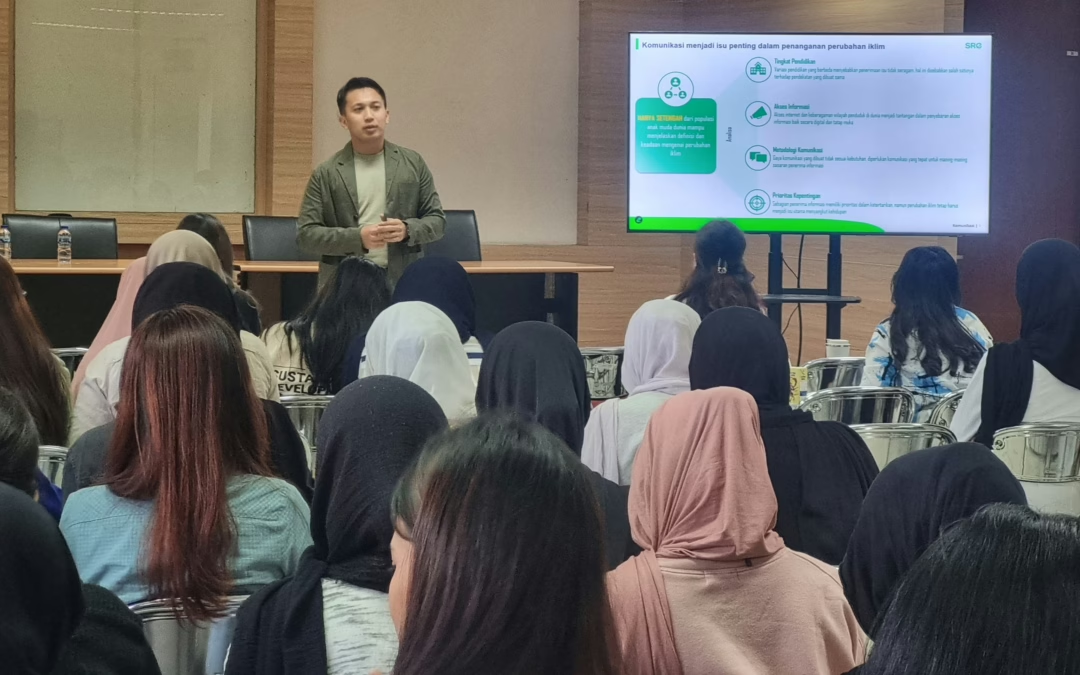Depok-2024 was recorded as the hottest year in the history of global temperature records with an average earth temperature reaching 1.55 degrees Celsius above pre-industrial levels based on data from the World Meteorological Organization (WMO) in the State of the Global Climate 2024 report. This phenomenon has caused various climate disasters, including extreme heat waves, floods, and droughts that have hit various parts of the world. Seeing this phenomenon, generation z has an important role, one of which is through the creation of creative content to increase public awareness about the real impacts of global climate change.
This was conveyed by Zagy Yakana Berian, Founder of the Society of Renewable Energy (SRE), in his presentation at a guest lecture themed “Creative Intelligence: Building a Relevant Creative Industry Through Data and Research” held by the Multimedia Broadcasting study program, Vocational Education Program, Universitas Indonesia (UI) some time ago. According to him, communication is one of the important issues in handling climate change. The delivery of information can be done quickly through various platforms, including social media which is currently a place for almost everyone to search for and find information.
 (Photo: Zagy explains the stages in creating creative content that raises environmental issues)
(Photo: Zagy explains the stages in creating creative content that raises environmental issues)
Zagy said, “Raising the issue of climate change impacts can be done through various creative content. For example, educational short videos uploaded on social media, interesting infographics or carousels, environmental podcasts, to campaigns through shared photos or videos.”
Furthermore, Zagy shared several steps in the stages of change that can be used as a basis for creating creative content. First, the awareness stage to raise awareness and draw attention to environmental issues. Second, the knowledge stage to encourage critical thinking and urgency from the target audience. Third, the contemplation stage that invites the target audience to change and start looking for concrete ways to act. Fourth, the action stage through behavioral changes that the target audience begins to do. Finally, the maintenance stage that shows the target audience has behaved consistently and focused on maintaining and expanding its impact.
 (Photo: Giving of a certificate of appreciation to Zagy Yakana Berian by Hanum Sakina, S.Sos., M.Si., the lecturer in charge of the course)
(Photo: Giving of a certificate of appreciation to Zagy Yakana Berian by Hanum Sakina, S.Sos., M.Si., the lecturer in charge of the course)
On the other hand, Zagy also shared how to create content through tree analysis, which is an analysis used to describe problems and help design ideas in detail. Starting from the impact, the core of the problem, to the various causes of the impact. “Through this tool, students will find it easier to analyze a problem that can later be used as creative content to be shared with the public,” explained Zagy.
Head of Multimedia Broadcasting Study Program, Penny Meliaty Hutabarat, S.Sos., M.S.M., said that the guest lecture integrated with the Creative Content Research course not only teaches students to create content, but also a step for educational institutions to train the younger generation to participate in protecting the environment. “Generation Z, which is very connected to the digital world, social media, and technology, is very effective in using digital platforms to spread messages about climate change. Through this guest lecture, I hope that students will also be more aware of environmental issues and help educate the public to protect our earth,” said Penny.
 (Photo: Group photo after the guest lecture ended)
(Photo: Group photo after the guest lecture ended)
The presence of practitioners in the industry related to the environment is one of UI Vocational’s steps to share education related to environmental issues. In accordance with the Sustainable Development Goals (SDGs), UI Vocational participates in several points, for example point 13 (Climate Action) which encourages positive actions related to climate change through lectures from industry practitioners, and point 17 (Partnerships for the Goals) through collaboration between educational institutions and industry practitioners to disseminate messages about climate change in a creative and interesting way.


